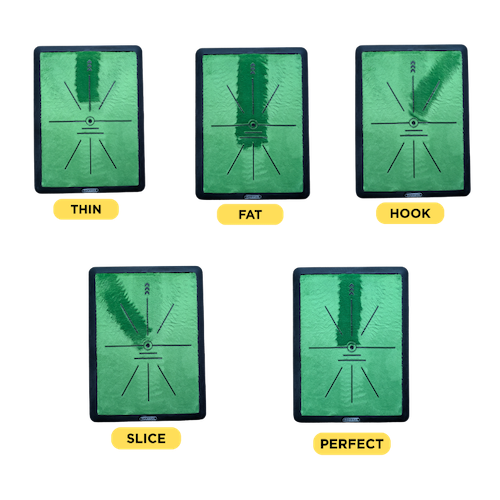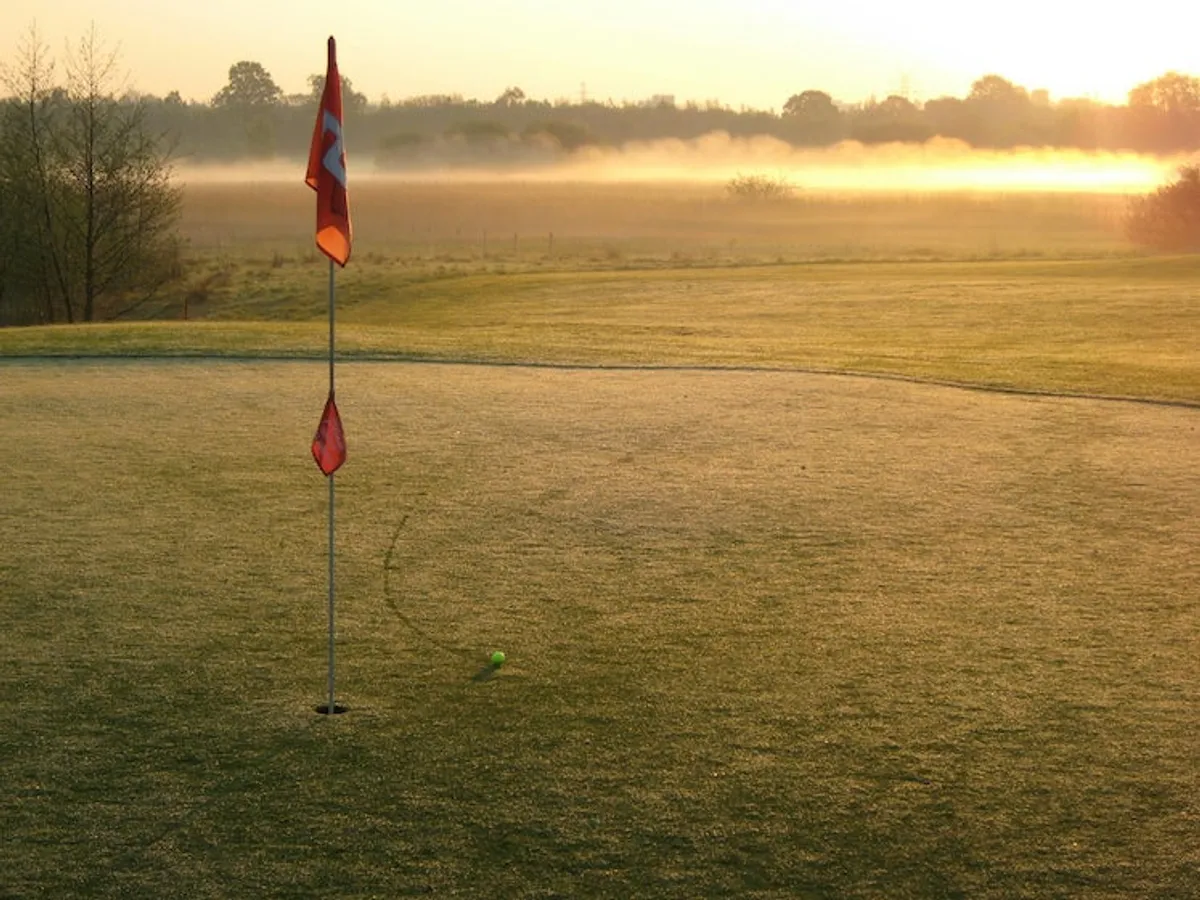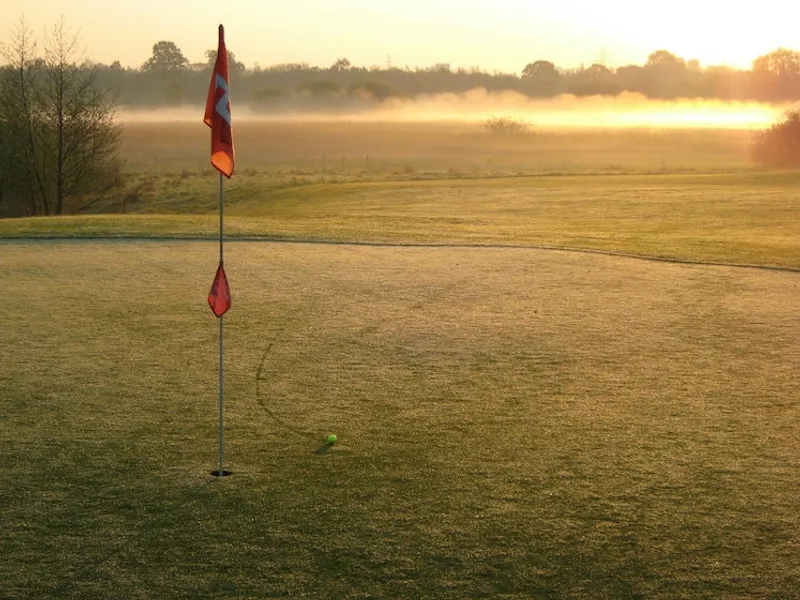Golfers continually look for reliable ways to approach greens, especially when facing tight lies or fast surfaces. The bump and run shot has emerged as a favored technique because it keeps the ball low and rolling, giving players an option that promotes predictability and control around the putting surface.
By minimizing the ball’s time in the air and utilizing the natural contours of the fairway or green, the bump and run can simplify tricky situations. This article explores the essence of the shot, details its execution, and illustrates how golfers can strategically apply it to refine their overall game.
What Is a Bump and Run Shot?
A bump and run is a golf technique designed to keep the ball low to the ground, causing it to begin rolling almost immediately after impact. Rather than relying on height or spin, this approach aims to let the ball travel smoothly along the turf, reducing the risk of unpredictable bounces or heavy winds throwing it off course. Golfers who master the bump and run appreciate how effectively it handles delicate greenside positions that require finesse without resorting to a lofted chip.
How to Fix Swing Flaws From Home Without a Coach or Expensive Gadgets
Struggling with thins, fats, slices—or just can’t tell what’s going wrong?
This swing mat shows you exactly how your club strikes the ball, giving instant visual feedback after every shot. With just a few swings, you’ll start spotting mistakes in your swing path that are otherwise invisible.

It’s a quick, low-hassle way to connect what you feel in your body with what’s really happening at impact.
Use it indoors or out, no ball required—just swing and learn. It’s one of the fastest ways to improve your swing right from home.
The simplicity of the shot is another reason it remains so popular among players of all skill levels. By focusing on a shorter swing and limited loft, golfers can control speed and direction more easily. This reliability builds confidence and often leads to lower scores because fewer elements—like spin, wind, or uneven ground—have a chance to disrupt the ball’s path.
How to Execute the Bump and Run Shot
Stance and Ball Position
A steady setup is the foundation for a good bump and run. Start with a narrow, balanced stance and allow a subtle bend in the knees. Place the ball just behind center to encourage a downward strike at impact that promotes an immediate roll. Distributing slightly more weight on the front foot further helps achieve a clean contact, preventing excessive loft on the shot. Maintaining this setup throughout the swing fosters consistent results and keeps the ball hugging the ground.
Swing Fundamentals
The bump and run calls for a compact, controlled swing rather than one requiring a forceful, full motion. Holding the club with a firm grip and pressing the hands slightly forward at address creates an ideal angle to strike the ball while minimizing unwanted height. A shorter backswing emphasizes control, while a low, measured follow-through ensures the ball’s trajectory remains subdued. Concentrating on brushing the grass immediately after ball contact helps deliver a clean hit that transitions quickly into a steady roll.
Club Selection
Selecting a club with lower loft is crucial for keeping the shot close to the ground. Many golfers prefer an 8-iron or even a hybrid, but the key factor is choosing something that naturally produces a low, running trajectory. The specific club used can vary depending on personal preference and the course conditions, yet the central goal remains the same: limiting lift and preserving a forward roll. Sticking to clubs that resist excessive height keeps the focus on rolling the ball smoothly and consistently toward the target.
Perfecting Flight and Roll
A low trajectory combined with minimal spin characterizes the best bump and run attempts. Striking the ball at a shallow angle, just before the clubhead grazes the turf, fosters this type of rolling motion. Slight tweaks in grip pressure and tempo at impact can make a big difference, helping compress the ball for a straighter, more reliable path. Regular practice—especially on different surfaces and sloping lies—helps players gain a feel for the subtle swing adjustments needed to produce the desired closely trimmed flight and seamless roll.
Common Errors to Avoid
Continuing to refine technique involves eliminating a few recurring pitfalls. Overswinging can undermine control and result in excessive height or distance, defeating the purpose of a low rolling shot. Setting the ball too far forward in the stance often leads to a steep, popping strike instead of a gentle bump. Too much wrist action during the swing can create unintended spin, turning a straightforward shot into a misdirected result. Staying attentive to these details helps maintain the hallmarks of a great bump and run: consistent contact, low flight, and controlled roll.
Applying the Bump and Run in Your Game
Strategic Advantages Around the Green
Bump and run shots shine when confronted with scenarios that call for keeping the ball on a tight path. Whether a small patch of rough precedes the green or a gentle rise separates you from the flagstick, staying low and rolling can be superior to lofting the ball in the air. This approach makes particular sense on fast greens, where judging the bounce becomes trickier. Instead of worrying about a high chip landing unpredictably, a calculated ground-hugging shot travels smoothly and cooperates with subtle slopes.
Course Management and Distance Control
Steering clear of hazards often hinges on choosing a method of arrival that maximizes consistency. In front of bunkers or subtle mounds, opting for a bump and run can help the ball clear the trouble area without demanding the perfect contact needed for higher lofts. This technique provides an added level of security when water or thick rough lurks, reducing the margin for error by relying on touch instead of full-swing power. By practicing these shots, golfers develop a greater feel for distance control and height management, essential components of well-rounded course strategy.
Conclusion
Though modest in height, the bump and run shot has major benefits for players seeking an efficient way to control the ball around the green. Its low-flying trajectory, grounded roll, and reduced complexity offer a practical solution when precise distance control is crucial.
If you want a more dependable short game, practicing the bump and run is a robust step forward. By incorporating it into your overall strategy, you’ll gain not only a new tool in your shotmaking arsenal but also a deeper understanding of how subtle adjustments—and a focus on fundamentals—can lead to noticeable improvements in your golf performance.







